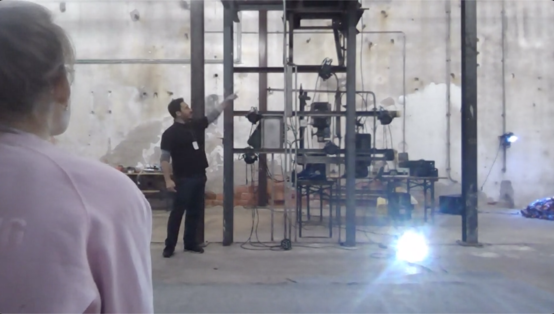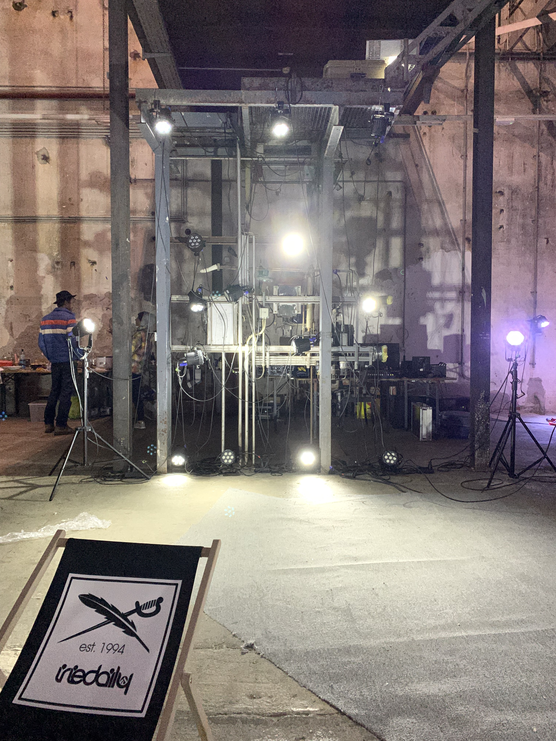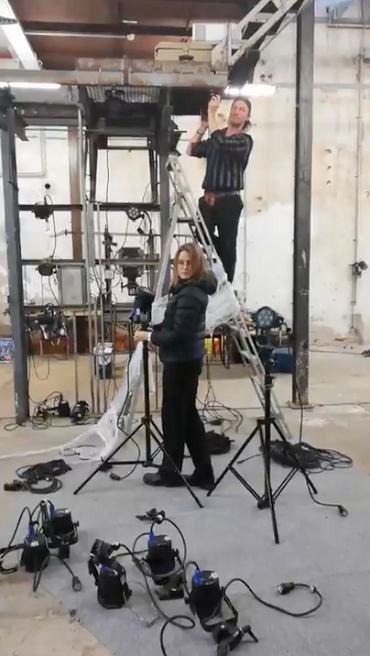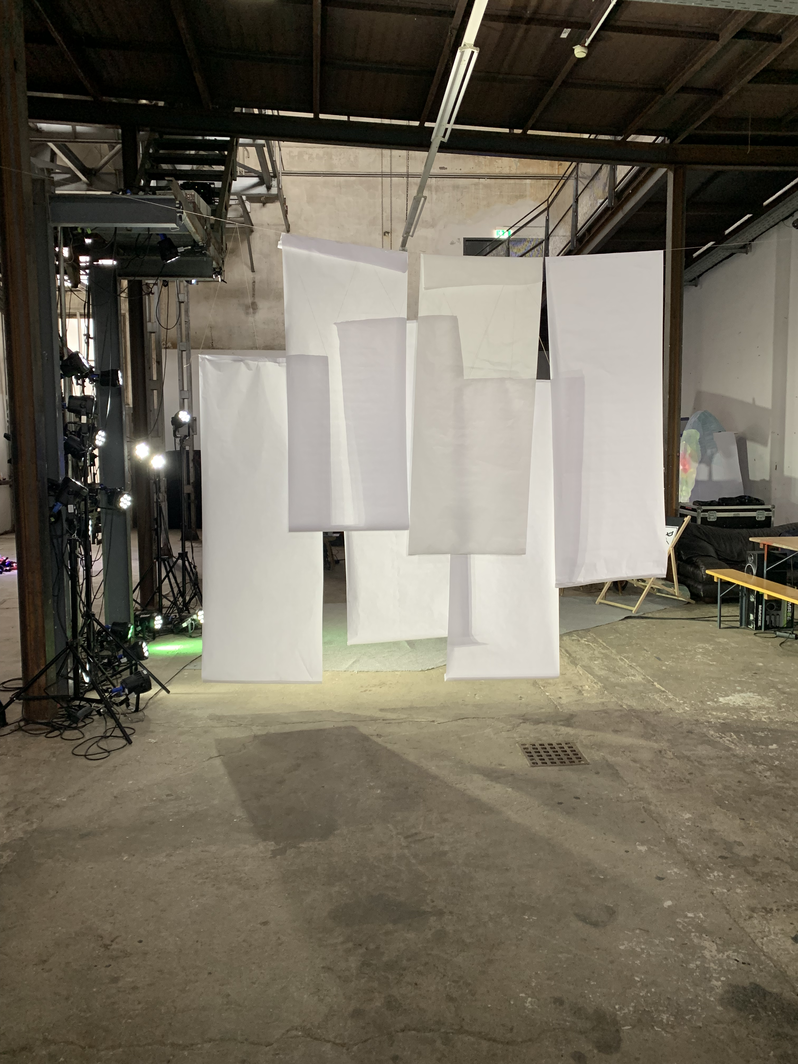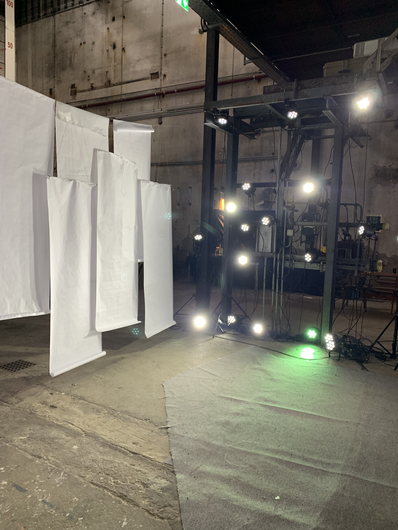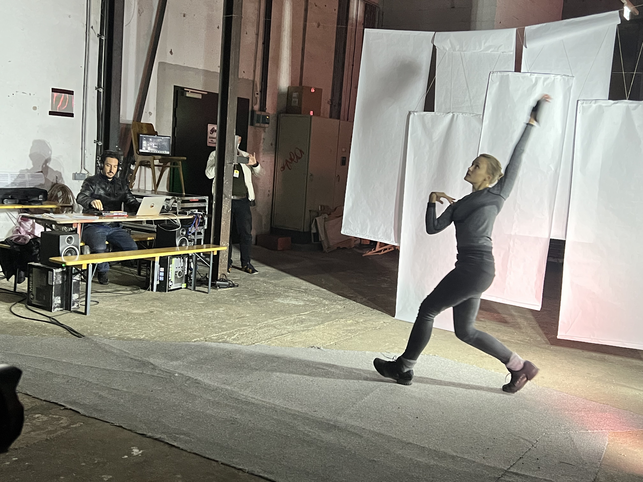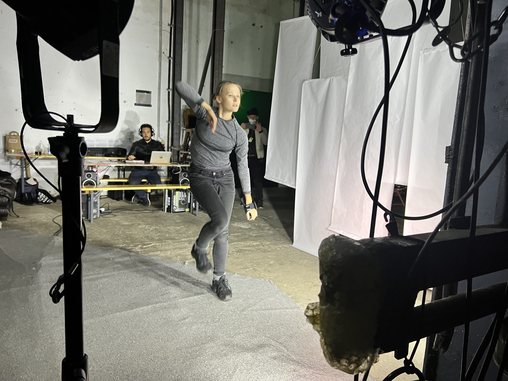Our journey, much like the machine itself, was less about arriving at a fixed destination and more about exploring the processes, connections, and conditions of possibility. Through trial, error, —and during residency at the Schmiede Hallein—, we discovered that building a Desire Machine is not about following a rigid blueprint but about embracing fluidity, interactivity, and the unexpected. Consider this article your guide—not to a finished product, but to the messy, exhilarating process of creating a machine that thrives on possibility.
One of the tangible byproducts of this project is a piece of code developed by Adrián Artacho and Leonhard Horstmeyer, which emerged from their collaborative exploration of movement and sound. The algorithm, playfully dubbed SmoothOperator, identifies shifts in movement regimes by analyzing sensor data and body landmark estimations from 2D video in real time. Using smoothness as a metric to evaluate interruptions in movement, the SmoothOperator attempts to bridge the gap between quantitative data and artistic expression. Alongside this, the LightWall—a simulation of the 20-light matrix used for testing—was developed to prototype and refine the interaction between movement, sound, and light. The technical details of this work were published in the proceedings of the MOCO'22 conference, and the code for both the SmoothOperator and the LightWall is openly accessible.
The Desire Machine project emerged from conceptual explorations of Deleuze and Guattari ideas on Assemblages and Desiring Machines (Deleuze and Guattari 1983), developed within the artistic research project Atlas of Smooth Spaces (AR 640). These ideas were further deepened and explored from a performative perspective during the Schmiede Hallein residency in September 2022, culminating in the presentation of the performance Desire Machine at the residency's closing event.
To assemble the Desire Machine, we gathered all available light spots (20 in total) and secured them to the existing industrial structure at the center of the Schmiede Hallein boiler room. This arrangement created a dynamic interplay between the lights and the surrounding space, emphasizing the industrial aesthetic of the environment. The rawness of the setup merged with the industrial feel of the room, from which the Desire Machine could not be told apart at first glance.
This performance—arguably a work-in-progress or a snapshot of an ongoing research process—was uniquely situated in the center of a large industrial space (the Boiler Room at Schmiede), with no fixed seating or preferential audience positioning. Spectators were free to move in, out, and around the space, engaging with the performance from any angle. The boundaries of the performance were intentionally fluid, with no clear beginning or end, reinforcing the concept of a machine that generates conditions rather than producing a fixed, composed output. Even when the dancer momentarily left the space, the "machine" continued to function, blurring the line between performance and interactive installation. (
Additionally, we constructed a white paper screen to delineate one side of the installation, providing a surface for the dancer’s silhouette to emerge. This screen not only framed the dancer’s movements but also amplified the interplay of light and shadow, creating a preferred vantage point for the performance.


